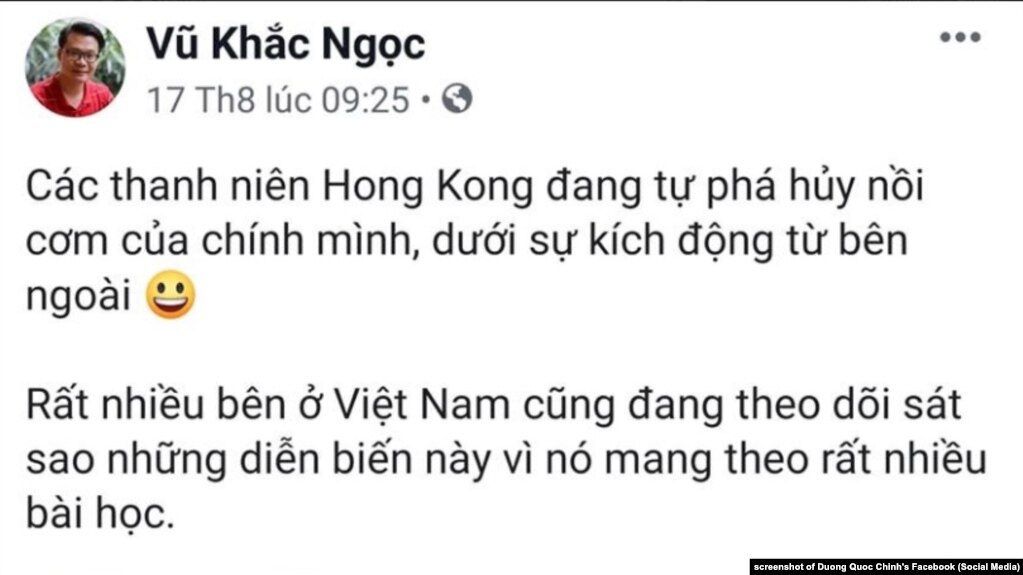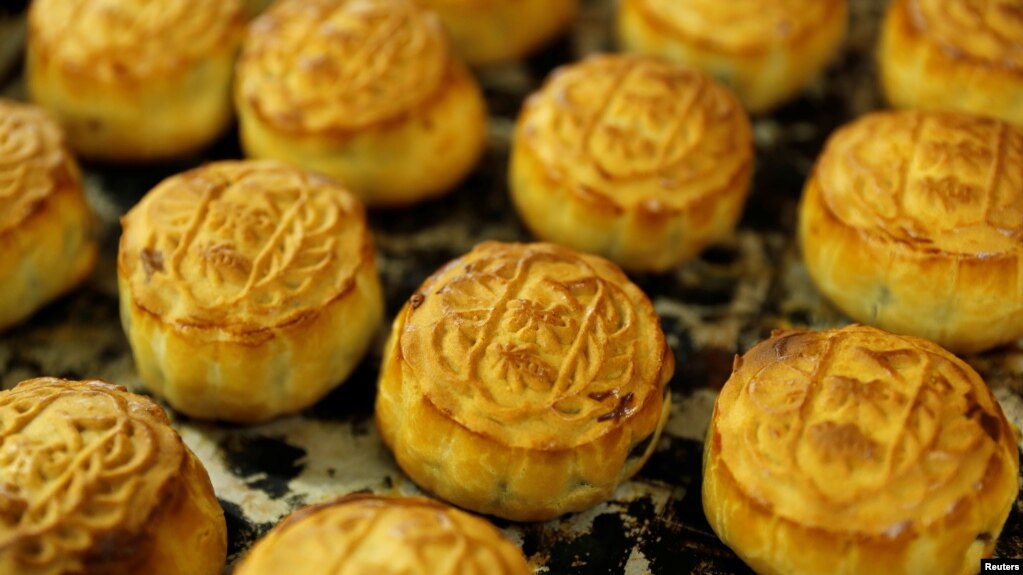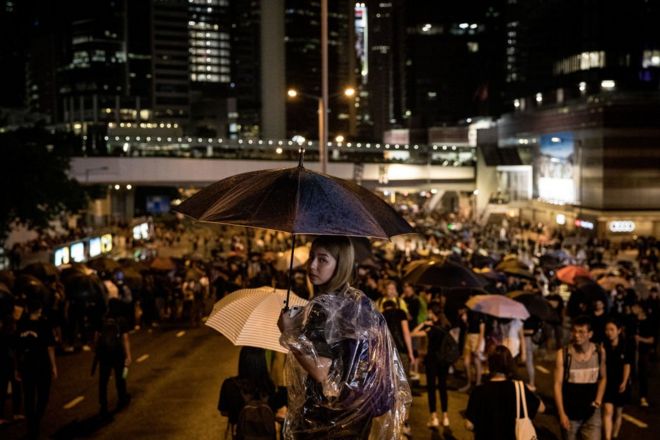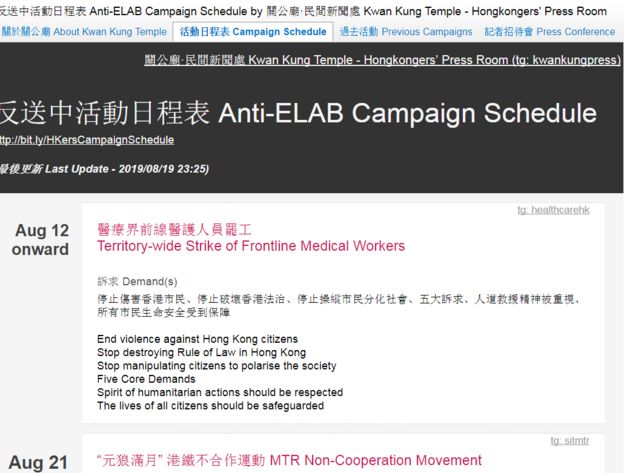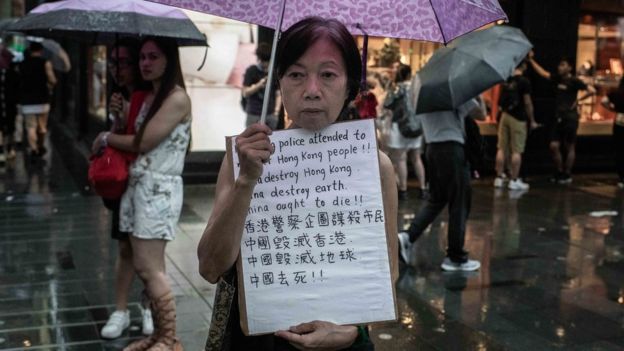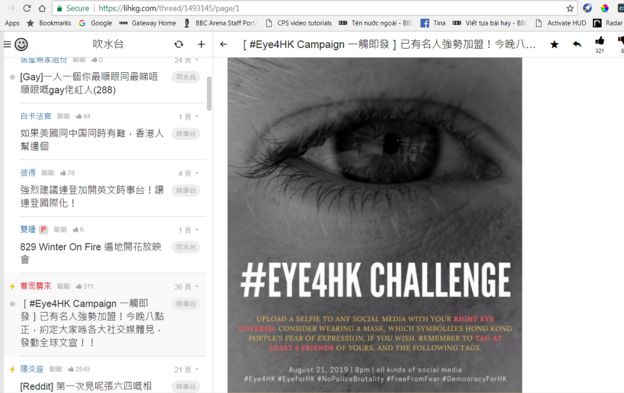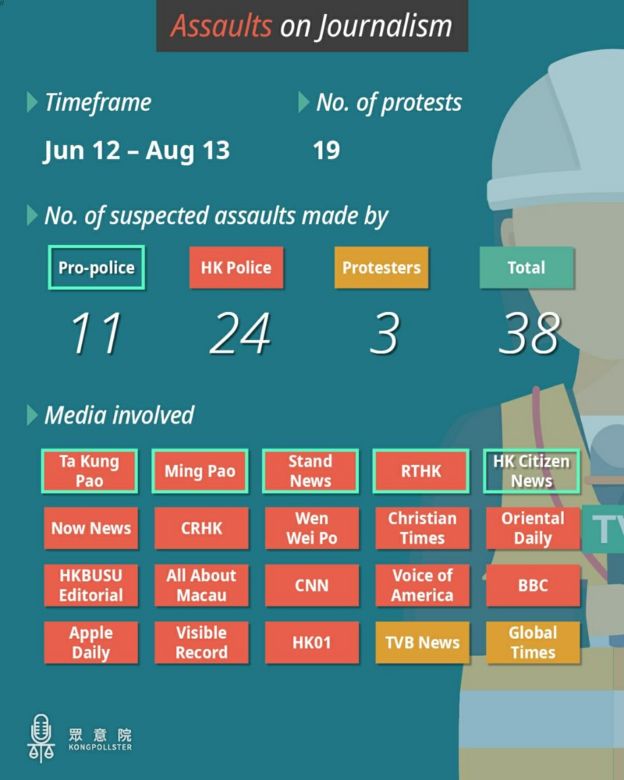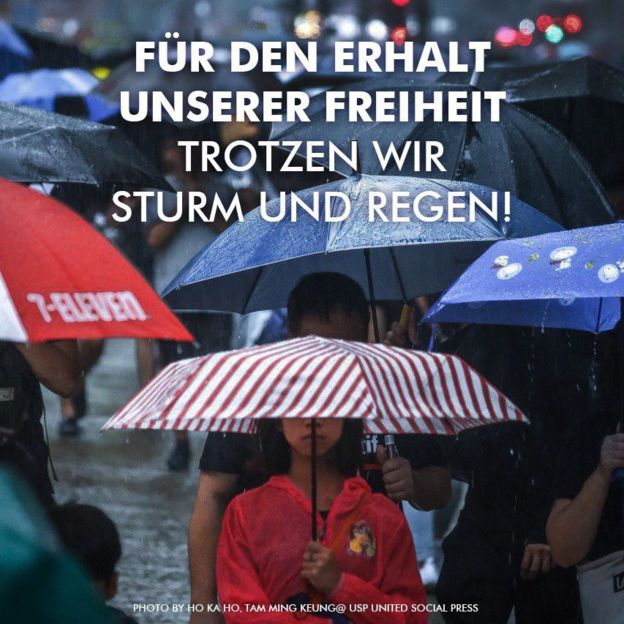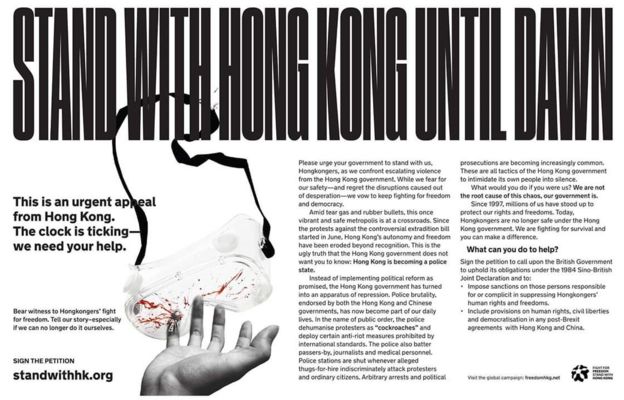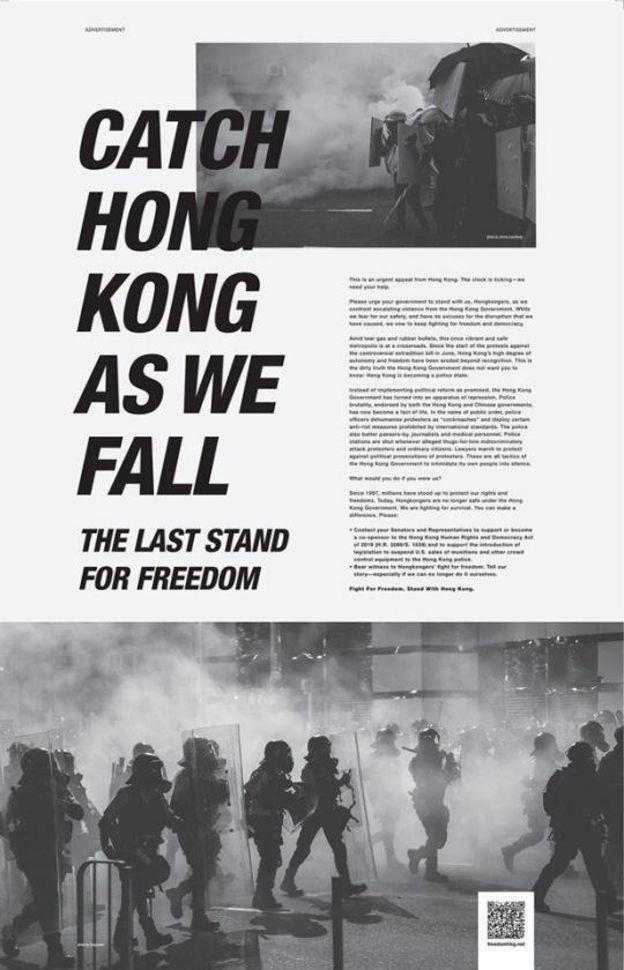Trang 3/9
How China is weaponising its propaganda-machine media to bring down Hong Kong protesters
Đã gửi: Thứ hai 19/08/19 21:05
bởi Hoàng Vân
-
How China is weaponising its propaganda-machine media
to bring down Hong Kong protesters
_________________________________________
The Chinese Government has a powerful tool for taking Hong Kong’s protests into its own hands — and the scariest part is how well it’s working.
Gavin Fernando - news.com.au - AUGUST 19, 2019

The Chinese government has a powerful tool for taking Hong Kong’s protests into its own hands.
‘They’re prepared to die’:
What the Hong Kong protests are really about
Over the past few months, your news feed has no doubt been flooded with footage from Hong Kong’s massive pro-democracy protests.
Hundreds of thousands of people are continuing to take to the streets each weekend as a powerful symbolic rejection of mainland China’s increasing reach.
Only those residing in the mainland aren’t getting this side of the story. At first, they were barely seeing anything about the demonstrations. Now, the only picture being presented to them is one of violent thugs lashing out at authority figures, and showing unwarranted disrespect to a benevolent Beijing.
In other words, the one thing China initially kept away from the Hong Kong protests is now its biggest weapon — its state media.
It’s a careful tactic by an authoritarian government seeking to take control of an increasingly uncontrollable situation.
- “The Chinese Government is trying to weaponise the protests. Rather than trying to completely hide them from the Chinese people they’re employing tactics to highlight violence and say these are ‘terrorists’ working at the beheadst of foreign governments, like the US,”
Dr Malcolm Davis, a senior analyst at the Australian Strategic Policy Institute, told news.com.au.
“They’re trying to shape the narrative to their needs.”
And it could reach a bloody end point.
HOW CHINA IS USING FAKE NEWS AS A WEAPON
When the Hong Kong protests started, China’s state media was largely silent. As far as its people were concerned, there was nothing worth mentioning taking place south of Shenzhen.
When the first major protests began on June 9, the Chinese Government sought to downplay it, with state media reports erroneously claiming the majority of people were rallying in defence of joining the mainland.
This is typical of the Xi Jinping-led government, which runs its own regulated version of the internet through a Great Firewall that blocks content it doesn’t want its citizens to see, including Facebook, Twitter, Instagram and various western news outlets.
At this time, the demonstrators were coming up with ingenious ways of forcing mainland citizens to digest their message, air-dropping memes and flyers in simplified Chinese to strangers at Kowloon’s popular metro stations frequented by mainland tourists.

The Hong Kong people have been protesting for more than ten weeks straight.
Source:Getty Images
But fast-forward 10 weeks, and the Xi Jinping-led government’s state media has embraced the protests, actively pushing footage and editorials distorting the events to send a message both to mainland residents and Chinese citizens abroad.
Their daily coverage routinely describes the protests as “riots”, and the protesters as “thugs” and “radicals”.
Any footage or events with angles that could lend sympathy or support to the mainland are amplified across China’s state media channels.
Take, for example, the Australian tourist who was filmed clashing with pro-democracy protesters after he missed his flight and was left stranded at the airport.
In western media and online, the man was derided as “trash” and “entitled” for degrading the protesters’ plight over something as trivial as a missed flight.
But nationalistic state media outlet The Global Times shared the video on Twitter as proof of foreigners defending the mainland over the Hong Kong protesters, stating that the protesters “got in the way” and that the defender “fought back”.
#HongKong protesters got in the way of a foreign tourist in #HK airport after all departures were canceled due to sit-in protests. The tourist fought back: "Hong Kong is a part of China!" "Go get a job!" #香港 pic.twitter.com/Ylso5Xykfx
— Global Times (@globaltimesnews) August 12, 2019
There are increasing instances of Chinese state media now posting out-and-out fake news about the demonstrations.
For example, one widely shared video on Weibo shows a female protester who lost an eye from a rubber bullet last weekend appearing to accept payment from other protesters, suggesting the incident was staged.
The woman accepting the cash in the video was not the same protester who lost an eye. Regardless, China’s state television network posted the video on its website, insinuating but stopping short of directly stating that the protesters were paid actors.

Over the past week, protesters have worn eyepatches in solidarity with a woman who lost her eye to a rubber bullet.Source:AP
In another incident, a video appeared showing a protester with a toy weapon. The China Daily circulated it as erroneous evidence that the protesters were resorting to gun violence.
China’s coverage of the demonstrations aims to spark nationalistic fervour among readers — not just through criticising the protesters, but inspiring support for defenders of the mainland.
Earlier this week, Chinese state media effectively turned one of its reporters into an overnight sensation following his altercation with protesters.
Fu Guohao, a Global Times journalist, was tied up and assaulted after getting into an altercation with demonstrators at Hong Kong airport earlier this week.
According to Hong Kong Free Press, Fu was taking close-up photos of protesters. Throughout the movement, many protesters have gone to lengths to conceal their identities with face masks, goggles and umbrellas, fearing they will be tracked down by authorities.
When protesters asked him to show his press identification, he reportedly refused and tried to leave.
- “He said in English that he was a tourist,”
one protester later told reporters.
“If he had co-operated and did not try to run away, I believe we would not have had such a big reaction.”
Photos and videos show black-clad protesters using cable ties to bind the man’s hands and legs. As he was being tied up, he said: - “I support Hong Kong police. You may now beat me up.”

Fu Guohao was turned into an overnight sensation in mainland China after demonstrators surrounded and assaulted him during an airport protest.Source:AP
When mainland China got hold of the story, Fu became an overnight sensation. State media pushed the image of him as a pro-Beijing poster boy. The footage of his restraint spread across Chinese social media, and his expression of support for the Hong Kong police went viral.
China’s People’s Daily newspaper has praised Fu for his “manliness”, writing: - “Let’s remember Fu Guohao and his awe-inspiring righteousness while being held. This is what a dignified and upright Chinese should be like.”
Long story short, if you’re a Chinese citizen right now, you’re getting sold a story about thuggish demonstrators hurling bricks at police officers and seeking to topple the system.
The “why” is deliberately hazy, even though the protesters have been transparent with their aims from the start; they want the permanent withdrawal of a controversial extradition bill, an independent investigation into police corruption, and reassurance that mainland China would let them enjoy their civil liberties and freedoms until 2047, as was initially agreed upon.
This is propaganda at its finest. And already, it seems to be making its mark.
HOW FAR WILL BEIJING GO TO STOP PROTESTS?
Experts say the shift in media coverage of the protests is the Government’s way of stirring up nationalistic support and while threatening the territory with a more drastic response from Beijing in the near future.
It appears to be having the desired effect. In the wake of the Fu incident, China’s popular microblogging platform Weibo was flooded with nationalistic comments from Chinese netizens.
- “How many Chinese will have sleepless nights? Our state power should take action now!” said one.
“If no further measures are taken, both the central and Hong Kong governments will lose people’s hearts! Too much restraint amounts to connivance,” wrote another.
One even said they should be killed over the protests. - “Beating them to a pulp is not enough,” the user wrote.
“They must be beaten to death. Just send a few tanks over to clean them up.”

China’s state media has published footage of military vehicles purportedly heading towards the southern border with Hong Kong.Source:Supplied

The footage sparked alarm, heavily circulating throughout western media.Source:Twitter
At the same time, China’s state media has published footage of large-scale exercises featuring the People’s Armed Police in Shenzhen, near the Hong Kong border. They also published footage of military trucks and tanks driving down a highway, purportedly towards the border.
Dr Malcolm Davis, a senior analyst at the Australian Strategic Policy Institute, says the Chinese media’s goal is ultimately to delegitimise the protest movement.
- “The Chinese Government is trying to weaponise the protests. Rather than trying to completely hide them from the Chinese people they’re employing tactics to highlight violence and say these are ‘terrorists’ working at the beheadst of foreign governments, like the US,”
he told news.com.au.
“They’re trying to shape the narrative to their needs.”
He said the footage of trucks and Chinese soldiers, aired on Chinese state television, was designed to send a clear threat to the Hong Kong protesters.
- “It’s sending a message of ‘We can crush you, this will be Tiananmen Part Two’.
They’ve got the police ready to go. Their local military commander said they could be there in a matter of minutes.”

Xi Jinping has a lot to lose, depending on how he responds to the protests.Source:AFP
But for the next couple of months, at least, China’s military presence may be a case of smoke and mirrors.
Dr Davis says it’s likely Mr Xi will hold off until at least October 1st, which will mark the 70th anniversary of the founding of the People’s Republic of China.
In the lead-up to this milestone, Mr Xi has arranged for a massive display of military strength on Tiananmen Square. Deploying People’s Liberation Army troops to Hong Kong before that date would detract from this.
At the same time, China is facing a major economic crisis, and Hong Kong’s financial status in the world is crucial to the mainland staying afloat. Experts say an all-out invasion could have huge economic and political consequences for Beijing.
But Dr Davis notes Mr Xi will stand firm on his goal of bringing Hong Kong into the mainland.
- “I guarantee you Xi Jinping will not allow this protest in Hong Kong to become a cradle of challenge to the central government. He will not accept Hong Kong slipping from his grasp, and if he gets a sense that that’s happening, he’ll act.”
He says it’s more likely Mr Xi would deploy Chinese police to support the Hong Kong police, but says the Government will do all it can to avoid sending in People’s Liberation Army troops.
- “If the PLA go in we’ll have another Tiananmen massacre, and the Chinese Government wants to avoid that.”
In the meantime, the Hong Kong protesters are rallying on. Today marks the 11th consecutive week of protests — and they show little signs of slowing down.
WHY IS HONG KONG PROTESTING?
The Hong Kong people have been protesting for nearly three consecutive months.
The demonstrations started as a protest against a proposed extradition bill that would see criminal suspects sent to China, but have since become more widely about opposition to the mainland’s growing political influence overall.
When Hong Kong was handed over from Britain to China in 1997, it was agreed that the territory would be allowed to maintain its unique freedoms and civil liberties for the next 50 years — a deal the protesters believe has not been honoured by Beijing.
The protesters believe - China has gradually been whittling away their liberties since the handover,
- including by suppressing the “Umbrella Movement” in 2014
- and by kidnapping five Hong Kong booksellers.
With the ongoing protests, they are now pushing for - the right to directly elect their own government,
- for an independent commission to investigate police brutality,
- and they want the territory’s leader, Carrie Lam — who was hand-picked by the Chinese Government — to resign.
https://www.news.com.au/world/asia/how- ... 0244bdaa2f
Facebook và Twitter vạch trần chiến dịch của Bắc Kinh bôi nhọ người biểu tình Hồng Kông
Đã gửi: Thứ hai 19/08/19 22:10
bởi Hoàng Vân
Biểu tình Hong Kong: Twitter và Facebook xóa tài khoản TQ
Đã gửi: Thứ hai 19/08/19 22:20
bởi Hoàng Vân
-
Biểu tình Hong Kong:
Twitter và Facebook xóa tài khoản TQ
___________________________
Dave Lee - Phóng viên Công nghệ Bắc Mỹ - 20 tháng 8 2019
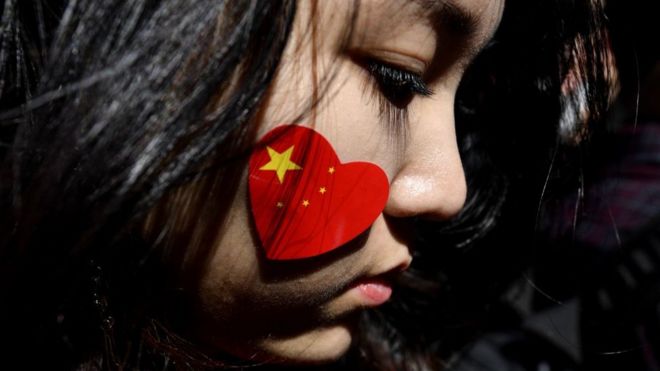
Twitter cho biết họ đã xóa 936 tài khoản
"đang được sử dụng để gieo rắc bất hòa chính trị ở Hong Kong"
Twitter và Facebook đã thực hiện chặn các tài khoản
mà họ cho là thuộc một chiến dịch truyền thông sai lệch
do Trung Quốc hậu thuẫn.
Twitter cho biết đã xóa 936 tài khoản "đang được sử dụng để gieo rắc bất hòa chính trị ở Hong Kong".
Twitter nói các tài khoản này có nguồn gốc từ Trung Quốc đại lục và là một phần trong nỗ lực phối hợp nhằm làm suy yếu tính hợp pháp và các vị thế chính trị của phong trào biểu tình Hong Kong.
Facebook cho biết đã xóa "bảy trang, ba nhóm và năm tài khoản Facebook".
"Họ thường đăng bài về các tin tức chính trị địa phương và các chủ đề như biểu tình Hong Kong," ông Nathaniel Gle Rich, người phụ trách chính sách an ninh mạng của Facebook, cho hay.
"Mặc dù những người đứng sau hoạt động này cố gắng che giấu danh tính, cuộc điều tra của chúng tôi đã tìm thấy các liên kết liên quan đến chính phủ Trung Quốc."
Ngoài 936 tài khoản cụ thể, Twitter cho biết có tới 200.000 tài khoản khác được thiết kế để khuếch đại thông tin sai lệch. Các tài khoản này đã bị chặn trước khi kịp 'hoạt động một cách tích cực'.
"Dựa trên các cuộc điều tra chuyên sâu của chúng tôi," Facebook cho hay trong một thông cáo, "chúng tôi có bằng chứng đáng tin cậy rằng đây là một hoạt động được nhà nước hậu thuẫn".
"Cụ thể, chúng tôi đã xác định số lượng lớn các tài khoản hoạt động theo cách phối hợp để khuếch đại các thông điệp liên quan đến các cuộc biểu tình ở Hong Kong."
Facebook nói thêm: "Chúng tôi sẽ tiếp tục cảnh giác, nghiên cứu mạng lưới này và chủ động thực thi các chính sách của mình."
Động thái này được đưa ra sau khi Twitter bị chỉ trích dữ dội vào cuối tuần qua vì cho phép hãng tin Xinhua của Trung Quốc mua các bài quảng cáo trên trang này. Twitter cho biết vào thứ Hai 17/8 rằng sẽ không cho phép quảng cáo như vậy nữa.
"Từ nay về sau, chúng tôi sẽ không chấp nhận quảng cáo từ các cơ quan truyền thông do nhà nước kiểm soát."
Tuy nhiên, Twitter cho biết chính sách mới này không áp dụng "đối với các cơ quan có đóng thuế, bao gồm cả các đài truyền hình độc lập."
Các cuộc biểu tình ở Hong Kong diễn ra như thế nào?

Người biểu tình Hong Kong đụng độ với cảnh sát
Hàng ngàn người Hong Kong đã biểu tình kể từ tháng Ba để phản đối một dự luật của chính phủ cho phép dẫn độ nghi phạm từ Hong Kong sang Trung Quốc đại lục.
Những người chỉ trích dự luật cho rằng nó sẽ làm suy yếu nền tư pháp độc lập của Hong Kong và có thể được sử dụng để nhắm vào những người lên tiếng chống lại chính phủ Trung Quốc.
Dự luật đã bị đình chỉ vào tháng Sáu sau một loạt các cuộc biểu tình lớn. Nhưng các cuộc biểu tình vẫn tiếp tục và hiện đã biến thành một phong trào lớn hơn đòi hỏi cải cách dân chủ và một cuộc điều tra về sự tàn bạo của cảnh sát trong các cuộc biểu tình.
Tuần trước, hàng ngàn người biểu tình đã tràn vào sân bay Hong Kong, dẫn đến đụng độ với cảnh sát và khiến trăm chuyến bay bị hủy.
Các nhà tổ chức cho biết 1,7 triệu người đã xuống đường biểu tình ôn hòa hôm Chủ nhật 18/8. Nhưng cảnh sát đưa ra con số thấp hơn nhiều ở mức 128.000.
Chính phủ Trung Quốc đã lên tiếng sau tình trạng bất ổn ở sân bay, lên án đó là "hành vi gần như khủng bố".
https://www.bbc.com/vietnamese/world-49403629
Nói người Hồng Kông ‘tự đập nồi cơm’, thầy giáo Việt gây bão mạng
Đã gửi: Thứ hai 19/08/19 22:30
bởi Hoàng Vân
Hong Kong: Bánh trung thu cũng mang khẩu hiệu biểu tình
Đã gửi: Thứ hai 19/08/19 22:40
bởi Hoàng Vân
Hong Kong: Tại sao họ không sợ hãi?
Đã gửi: Thứ ba 20/08/19 22:10
bởi Hoàng Vân
-
Hong Kong:
Tại sao họ không sợ hãi?
_________________________________
Mặc Lâm - 21/08/2019
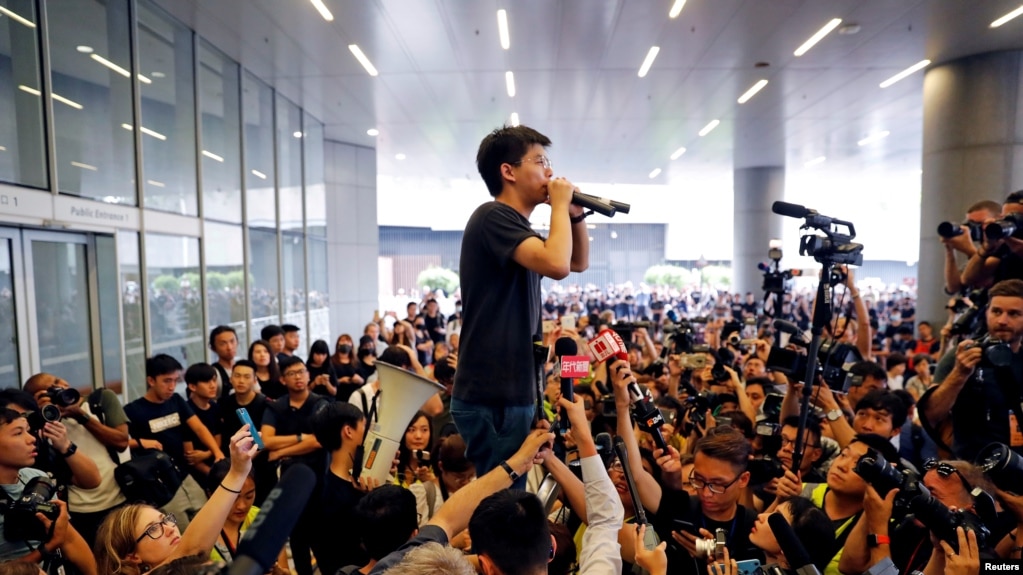
Gần ba tháng trôi qua trên vùng đất đang thấm đẫm không ngừng những câu chuyện vừa đáng ngạc nhiên lẫn thán phục về sự minh mẫn, sáng tạo lẫn kiên trì và không hề sợ hãi của người Hong Kong đang làm cho cả thế giới tròn mắt thán phục. Hong Kong đang trực diện với sức mạnh lớn gấp ngàn lần từ đại lục, nơi hoàng đế cộng sản Tập Cận Bình đang trị vì với chủ trương không bao giờ nhượng bộ trước bất cứ thử thách nào xâm hại quyền lợi của chế độ.
Hong Kong bé nhỏ nhưng không tầm thường, bởi mỗi lần xuống đường nó tập trung được hầu như toàn thể người dân trên phần đất nhỏ bé này. Họ lần lượt thay nhau lên tiếng cho mơ ước chung: thoát ra khỏi quy chế một quốc gia hai chế độ, thứ lý thuyết chỉ có trên giấy tờ và thực tế tuy chưa tới 50 năm nhưng đại lục đã thọc bàn tay thô bạo vào vùng đất này, vốn thừa hưởng thứ tự do thật sự chứ không phải từ bùa chú mà Đảng Cộng sản Trung Quốc ban phát cho nhân dân trong nhiều chục năm qua.
Xuống đường biểu tình là sinh hoạt chỉ xảy ra trong các nước có một nền dân chủ thực sự. Hong Kong tuy bị trả lại cho Trung Quốc nhưng vẫn được sinh hoạt dân chủ như khi chưa trao trả. Nó được quyền duy trì hệ thống kinh tế - chính trị của chủ nghĩa tư bản trong khi phần còn lại là Trung Quốc đại lục nằm dưới chế độ xã hội chủ nghĩa. Theo đề nghị này của Đặng Tiểu Bình, Hong Kong có thể tiếp tục hệ thống chính trị riêng, các vấn đề pháp lý, kinh tế và tài chính, bao gồm cả các hiệp định thương mại và văn hóa với nước ngoài.
Cuộc xuống đường chống lại Luật Dẫn độ là mồi lửa châm vào sự sợ hãi sẽ bị đối xử như con dân của một nước cộng sản khiến người Hong Kong quên hết những nỗi sợ khác nằm ngay trong thực tại. Họ có thể bị đàn áp khốc liệt, bị đánh đập, giam cầm thậm chí mất mạng trong đám đông mà họ là một thành viên… tuy nhiên tất cả những nỗi sợ ấy nếu so với phải bị sống dưới chế độ cộng sản thì cái sợ thứ hai đáng suy nghĩ hơn. Hong Kong thừa hưởng văn minh, tiện nghi và tư duy của thế giới dân chủ. Người dân được mở mắt hàng ngày và sự so sánh giữa hai chế độ cộng sản và dân chủ không còn gì nghi ngờ đối với họ nữa.
Những chàng trai, cô gái vừa bước vào đại học được những người rất trẻ đi trước dẫn dắt vào cuộc chiến trường kỳ này với niềm tin sắt đá vào kết quả cuối cùng. Có xem những video clip từ các cuộc họp báo của sinh viên Hong Kong mới thấy hết tầm cỡ thật sự của họ. Vững vàng, hiểu biết rộng rãi về quyền hạn của người dân, không khoan nhượng trước những áp lực từ phía chính quyền đặc khu hay từ đại lục. Họ không có cử chỉ, lời nói đao to búa lớn không hề lên giọng chỉ có ta là chân lý nhưng qua biện giải của họ người ta thấy toát lên hửng hực lòng tin vào sức mạnh của nhân dân, thứ duy nhất có thề chống lại cường quyền dù đó là cường quyền cộng sản.
Nhưng nếu chỉ một mình họ thì câu chuyện sẽ không thể tiếp diễn như ngày đầu tiên, khi ít nhất 1 triệu người cùng nhau kề vai hô vang một tiếng nói chung. Bên cạnh họ là cả xã hội Hong Kong, ngoại trừ cảnh sát và chính quyền đang nhận chỉ thị từ đại lục.
- Ngày 14 tháng 6 khoảng 6.000 bà mẹ đã tham gia cuộc biểu tình ngồi trong ba giờ tại Vườn Chater ở Trung tâm. Các bà mẹ kêu gọi Lâm Trịnh Nguyệt Nga từ chức và chính phủ phải rút lại dự luật Dẫn độ. Họ giương cao những tấm bảng lên án sự tàn bạo của cảnh sát, như "đừng bắn những đứa trẻ của chúng tôi."
- Ba tuần sau ngày 15 tháng 7 hơn 8.000 người cao tuổi lại tập trung tại chỗ cũ làm cuộc tuần hành lần thứ hai nhằm ủng hộ con cháu của họ tiếp tục xuống đường chống lại dự luật Dẫn độ với những biểu ngữ có nội dung "Hãy ủng hộ những người trẻ tuổi. Hãy bảo vệ Hồng Kong".
- Ngày 26 tháng 7 hàng trăm người tổ chức biểu tình ngồi tại phi trường quốc tế Hong Kong trong đó đa số là nhân viên của các hãng hàng không và Hiệp hội tiếp viên hàng không Cathay Pacific. Cảng vụ hàng không đã loại bỏ một số ghế để cung cấp thêm không gian cho người biểu tình.
- Vào đêm 1 tháng 8, hàng trăm nhân viên từ 80 tổ chức tài chính khác nhau đã tham gia vào một cuộc biểu tình tại Chater Garden ở Kim Chung về các vụ việc được cho là cảnh sát thông đồng với các băng đảng xã hội đen và yêu cầu tôn trọng luật pháp. Ít nhất 700 công nhân ngành tài chính đã đăng tải hình ảnh thẻ nhân viên để ủng hộ cuộc tổng đình công toàn thành phố.
- Ngày 2 tháng 8, khoảng 1.000 chuyên gia y tế đã tổ chức một cuộc mít tinh tại Edinburgh Place, Trung Hoàn. Chủ tịch Hiệp hội Bác sĩ Hong Kong chỉ trích các vụ bắt giữ đồng thời lên tiếng về việc cảnh sát sử dụng quá nhiều hơi cay đối với các nhà hoạt động dân chủ. Trong cùng ngày, hàng ngàn công chức Hong Kong tập hợp để ủng hộ những người biểu tình.
- Ngày 7 tháng 8, các luật sư Hong Kong tổ chức một cuộc tuần hành trong im lặng để ủng hộ những người biểu tình phản đối chính quyền.
- Tối ngày 8 tháng 8, khoảng 1.200 người Công giáo đã tổ chức một cuộc diễu hành dưới ánh nến qua Trung Hoàn trước khi kết thúc bên ngoài Tòa án phúc thẩm. Cuộc tuần hành do bốn tổ chức Kitô giáo tổ chức,
- Ngày 12 tháng 8, khoảng 100 chuyên gia y tế tại Bệnh viện Đông Pamela Youde Nethersole ở Chai Wan biểu tình chống lại sự lạm quyền của cảnh sát khi một người phụ nữ bị bắn vào mắt và bị thương nặng. Nhân viên y tế giơ biểu ngữ có dòng chữ "Cảnh sát Hong Kong đang cố giết người dân Hong Kong”
- Ngày 16 tháng 8, cuộc biểu tình được đặt tên "Ủng hộ Hồng Kông, quyền lực cho nhân dân" do nhóm đại diện sinh viên từ 12 trường đại học tổ chức diễn ra tại công viên Chater Garden ở khu vực trung tâm Hong Kong
- Ngày 17 tháng 8, hàng ngàn giáo viên, nhân viên ngành giáo dục xuống đường bày tỏ quan ngại về sự an toàn của học sinh. Theo hãng tin Aljazeera, họ tràn xuống cao tốc, vào trung tâm Hong Kong, vừa đi vừa hô vang: "Hãy bảo vệ thế hệ học sinh tiếp theo của Hong Kong"!
Tất cả những cộng hưởng ấy làm cho Hong Kong sinh động và rực sáng. Thế giới của 7 triệu con người ấy lan tỏa khắp nơi và làm cho người trẻ Hong Kong thêm niềm tin vào sự tranh đấu của họ.
Hong Kong là một ngoại lệ hiếm hoi khi biểu tình không phải là những đám đông hỗn loạn và thiếu kiểm soát, mặc dù đại lục cố gắng mang những thành phần bất hảo vào phá rối nhưng tai mắt của người biểu tình đã nhanh chóng phát hiện và cô lập chúng.
- Theo South China Morning Post cho biết ngày 18 tháng 8 cuộc tuần hành của 1 triệu 700 ngàn người dưới những chiếc dù đầy mà sắc của người dân Hong Kong đã làm cho thế giới thấy rằng chí có sự kinh hoàng khi nghĩ tới phải sống trong thế giới cộng sản mới đủ khả năng làm cho người dân Hong Kong sợ hãi tới mức phải chấp nhận hy sinh những gì họ hiện có. Dĩ nhiên cái giá phải trả cho một nền tự do dân chủ thật sự không hề nhỏ nhưng hiện tượng Hong Kong không những đánh động người cộng sản phải xem xét lại chính mình mà nó còn là tiếng chuông cảnh tỉnh thế giới Tây phương về sự nguy hiểm vô hình của Cộng sản chỉ phát hiện ra nó khi phải sống cùng chứ không phải nhìn từ xa như các tòa đại sứ từng làm.
https://www.voatiengviet.com/a/hong-kon ... 50067.html
Nhân viên Cathay Pacific Airlines nói bị 'khủng bố trắng'
Đã gửi: Thứ ba 20/08/19 22:20
bởi Hoàng Vân
-
Nhân viên
Cathay Pacific Airlines
nói bị 'khủng bố trắng'
____________________________________
21 tháng 8 2019
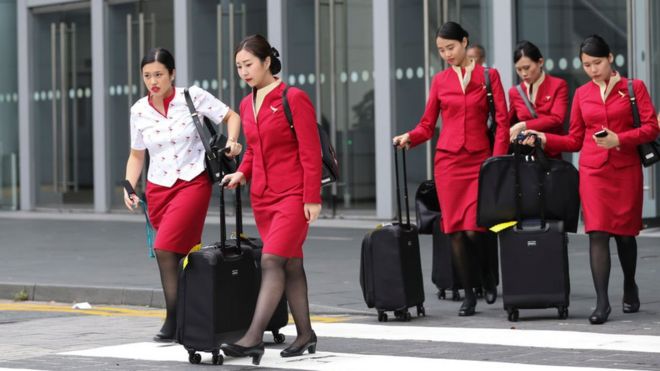
Nhân viên Cathay Pacific Airlines nói bị 'khủng bố trắng' sau khi lãnh đạo bị sa thải, theo Reuters.
Các phi công và nhân viên hàng không của Cathay Pacific Airlines nói bị 'khủng bố trắng', với các cáo buộc chính trị, sa thải và kiểm tra điện thoại do giới chức Trung Quốc thực hiện, trong bối cảnh biểu tình phản đối chính phủ ở Hong Kong chưa có dấu hiệu hạ nhiệt, theo Reuters.
Hãng Cathay, do một người Mỹ và một người Úc thành lập khi Hong Kong còn là thuộc địa của Anh năm 1946, đã rơi vào khủng hoảng 11 ngày trước, khi Trung Quốc yêu cầu họ sa thải các nhân viên tham gia vào các cuộc biểu tình.
Và hãng này tuân thủ - sa thải hai phi công, nhưng sau đó đã rơi vào tình trạng hỗn loạn sau khi CEO Rupert Hogg bị thay thế vào tuần trước.
Một phi công khác, Jeremy Tam, cũng là một nhà lập pháp ủng hộ dân chủ, cho biết ông và những người khác rời hãng hàng không vì không thể chịu đựng được áp lực chính trị nội bộ.
"Việc (các lãnh đạo hàng không Trung Quốc) can thiệp vào Hong Kong và gây áp lực trực tiếp lên một hãng hàng không địa phương chắc chắn là một cuộc 'khủng bố trắng'," ông viết trên Facebook cá nhân, sử dụng một cách diễn đạt phổ biến ở Hong Kong để mô tả các hành vi ngấm ngầm nhằm tạo ra bầu không khí sợ hãi.
"Từ các nhân viên hàng đầu đến lãnh đạo CEO đã từ chức vì vụ việc liên quan chính trị này."
Hãng hàng không xác nhận ông Tam không còn là nhân viên và nói họ không bình luận về các vấn đề nội bộ. Cơ quan quản lý hàng không Trung Quốc không trả lời các yêu cầu bình luận của Reuters.
Sự ra đi đột ngột của CEO Hogg đã để lại bầu không khí lạnh lẽo cho một công ty 27.000 nhân viên, theo một cuộc phỏng vấn của Reuters với 8 nhân viên, cũng như các bài viết trên các nhóm Facebook của nhân viên hãng này.
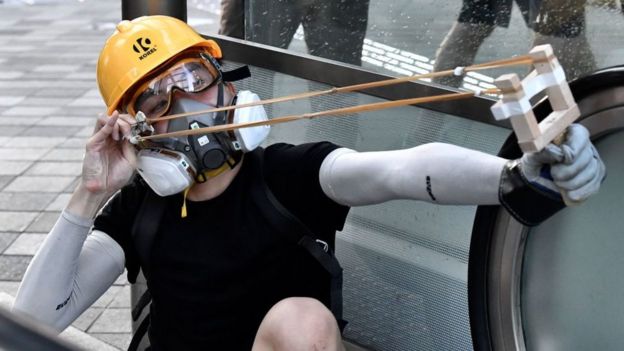
Một số nhân viên Cathay Pacific Airlines bị sa thải vì tham gia biểu tình ở Hong Kong (Ảnh minh họa)
"Có một cuộc 'khủng bố trắng' ở công ty chúng tôi," một thành viên phi hành đoàn thuộc Cathay Dragon nói với Reuters tại một nhà ga trên đường về nhà. "Chúng tôi thực sự cảm thấy e ngại khi nói về vấn đề chính trị, dù chỉ là chuyện phiếm."
"Một số người thân Bắc Kinh đã thành lập một nhóm trên Telegram và sẽ đăng thông tin cá nhân của chúng tôi, như địa chỉ, số điện thoại, nếu như họ phát hiện chúng tôi ủng hộ phong trào biểu tình trên mạng xã hội," cô nói thêm.
Sự ra đi của ông Hogg càng cho thấy áp lực mà các doanh nghiệp tư nhân ở Hong Kong hiện đang đối mặt, khi phải cố cân bằng giữa một bên là những người biểu tình và một bên là nhà cầm quyền Bắc Kinh.
Giám đốc điều hành mới của Cathay, Augustus Tang nói với các nhân viên vào thứ Hai 19/8 rằng công ty sẽ phục hồi sau những thách thức gần đây, nhưng sẽ không khoan nhượng đối với các hoạt động bất hợp pháp, hay vi phạm chính sách.
Một số công ty Hong Kong có các công ty mẹ do nhà nước Trung Quốc kiểm soát, bao gồm Huarong International và China CITIC Bank International, khuyên nhân viên tránh bay hãng Cathay nếu có thể, theo một báo cáo nội bộ mà Reuters được tiếp cận.
Kiểm tra điện thoại
Cơ quan quản lý hàng không Trung Quốc đã ra lệnh cho Cathay hôm 9/8 cung cấp thông tin nhận dạng các thành viên phi hành đoàn trên các chuyến bay ở đại lục và những người bay qua không phận Trung Quốc, và cấm họ không được tham gia vào các cuộc biểu tình.
Năm nhân viên cho biết, phi hành đoàn hạ cánh tại Trung Quốc đã bị giới chức hàng không Trung Quốc điều tra.
Họ kiểm tra điện thoại của các phi công và phi hành đoàn, thậm chí kiểm tra tin nhắn WhatsApp và album ảnh xem có tài liệu chống Trung Quốc nào không, một phi công nói với Reuters.
Cơ quan quản lý hàng không Trung Quốc đã không trả lời yêu cầu bình luận của Reuters.
Không ai trong số 8 nhân viên hàng không mà Reuters phỏng vấn dám tiết lộ tên đầy đủ vì sợ mất việc.
Cần phải làm Trung Quốc vui lòng
Cathay đã sa thải hai phi công do tham gia biểu tình, sau đó tuyên bố rằng hãng này hoàn toàn cam kết với 'một quốc gia, hai chế độ'.
Một tiếp viên hàng không, người nói chuyện với Reuters qua điện thoại, cho hay ban đầu các nhân viên phản ứng với việc sa thải đồng nghiệp bằng thái độ giận dữ và thất vọng.
"Nhưng sau đó, khi chúng tôi nhìn thấy công ty chịu áp lực như thế nào từ phía Trung Quốc, chúng tôi không giận giữ nữa mà cảm thông," cô nói. "Chúng tôi hiểu rằng cần phải làm Trung Quốc hài lòng."
Ba nhân viên khác, nói nhiều thành viên phi hành đoàn đang tìm cách tránh các tuyến đường của Trung Quốc, và vài người nhấn mạnh rằng họ sợ bất cứ điều gì họ nói cũng sẽ bị chuyển cho người quản lý hoặc cho Bắc Kinh.
Hai trang Facebook của nhân viên Cathay Pacific Airlines, CX Secrets và KA Secrets, nơi từng là diễn đàn để phàn nàn về việc thay đổi lịch làm việc hay chuyện phiếm, nay tràn ngập các thông điệp tranh luận về việc xử lý khủng hoảng.
Hầu hết đều kêu gọi lòng trung thành và sự im lặng.
"Cathay hôm nay là tương lai của Hong Kong ngày mai. Để đảm bảo giữ công việc này, (chúng tôi phải) im lặng và tiếp tục thỏa hiệp," một bài đăng trên Facebook cho biết.
https://www.bbc.com/vietnamese/world-49417191
Hong Kong: Phong trào biểu tình có lãnh đạo hay không?
Đã gửi: Thứ tư 21/08/19 22:10
bởi Hoàng Vân
Dân Hồng Kông tố cáo chính quyền dung túng xã hội đen hành hung người biểu tình
Đã gửi: Thứ tư 21/08/19 22:20
bởi Hoàng Vân
‘One country, two systems’: Why a simple agreement coined decades ago failed in Hong Kong
Đã gửi: Thứ năm 22/08/19 22:10
bởi Hoàng Vân
-
‘One country, two systems’:
Why a simple agreement coined decades ago
failed in Hong Kong
________________________________________________
These four simple words sparked optimism when they were first uttered 40 years ago. Instead, they’ve proved responsible for Hong Kong’s turmoil.
Gavin Fernando - AUGUST 23, 2019

One country, two systems.
This was the four-word principle created by China’s former leader Deng Xiaoping in the early 1980s.
The proposition was simple enough: there would be one overarching “country” — the People’s Republic of China — but Chinese territories like Hong Kong and Macau would retain a “high degree of autonomy” with their own special economic and administrative “systems”.
While officially united under the mainland, these regions would have their own government, separate legal and economic systems, and Hong Kong would serve as a vital trade route between mainland China and the rest of the world.
But in 2019, this vision hasn’t translated. In recent years, Beijing has become increasingly aggressive in its push for “one system for all” — and Hong Kong is determined not to go down without a fight.
WHY DIDN’T THE AGREEMENT WORK?
The past few months of protests in Hong Kong have become increasingly violent and drawn growing public ire from the mainland.
The success of the one country, two systems agreement rested on the good-faith assumption the Chinese Communist Party would allow Hong Kong to maintain its autonomy without interference until 2047.
Instead, we’ve seen repeat incidents of Beijing undermining it.
In 2003, Hong Kong’s first chief executive, Tung Chee-hwa, attempted to push through a national security law that many in the territory — including pro-democracy campers, lawyers, journalists and human groups — feared was aimed at silencing free speech.
More than half a million people protested the move, ultimately sparking a crisis of governance, and the bill was withdrawn.
In 2012, when the government tried to introduce a reformed curriculum plan of Chinese “patriotic” education into Hong Kong schools, a similar outcry followed.
The new education model would have bolstered the Chinese Communist Party in classrooms while whitewashing controversial moments like the Tiananmen Square massacre. Thousands took to the streets in protest.

The Hong Kong people have repeatedly staged protests
against Beijing’s control since the 1997 handover. Source:News Corp Australia
Then came the well-documented “Occupy Movement” of 2014 in which young protesters took to the streets demanding political reforms and the right to elect their own chief executive — one with no ties to Beijing.
In 2015, there was an international outcry after five staff at Causeway Bay Books — an independent publisher — mysteriously disappeared. It was suspected the Hong Kong citizens had been abducted by Chinese authority figures — a suspicion that was later confirmed.
More recently, the attempt by Hong Kong’s embattled leader Carrie Lam to push through an extradition bill that would allow criminal suspects to face trial in mainland China sparked the protests you’re seeing today. They have now been running for 11 straight weeks and are broadly against Beijing’s control.
In other words, one country, two systems wasn’t exactly honoured by China for long.
WAS THE AGREEMENT ‘DOOMED TO FAIL’?
Some critics have argued one country, two systems was never going to work in the first place.
Keith Richburg, a journalism professor at the University of Hong Kong, said it was “always doomed to fail” due to the fundamental political differences between the two regions — authoritarian China and liberal Hong Kong.
“Never before had an autocratic, communist-run, single-party dictatorship peacefully absorbed a modern, sophisticated, quasi-democratic capitalist territory,” he wrote in The Washington Post. “Never before had a people who had enjoyed free speech, freedom of assembly, a free flow of information and limited free voting voluntarily relinquished those rights to merge with a country where such freedoms were often ruthlessly suppressed.”
He argued its success rested on a “willing suspension of disbelief” — sitting back and pretending China’s communist rulers were going to allow this.

Some critics have argued one country, two systems was never going to work in the first place.
Source:Getty Images
But Adam Ni, a China researcher from Macquarie University, said the model wasn’t seen as an inevitable failure from the get-go. Rather, it failed because 21st-century Beijing refused to honour the agreement.
“I don’t think it was destined to fail,” Mr Ni told news.com.au. “There were fundamental political differences between Hong Kong and the mainland, but I think at times of negotiations things were still up in the air regarding the trajectory of the PRC and whether it was going to liberalise.
“It was only around the mid-2000s that the pendulum swung the other way towards more suppression and control.
“Today we can clearly say that’s the road the PRC went down, but back in the ’80s and ’90s the West was hoping to move it in a more liberal direction by engaging with the PRC.”

Since June 9, protesters have taken to the streets week after week in Hong Kong.Source:AP
Mr Ni noted the system was never going to last forever. Even the prospect of Hong Kong remaining semi-autonomous until 2047 — as agreed during the handover — was dubious.
“The Chinese Government was only going to allow one country two systems as an interim measure for integrating Hong Kong into the PRC’s political system, and we’ve seen China trying to accelerate that,” he explained. “It was a means towards an end of negotiating to get Hong Kong until it could get away with not adhering to the plan.
“Beijing’s long-term aim is to integrate Hong Kong into the PRC’s political systems and essentially rule the people as it does the mainland.”
He also said other major aspects of China’s rise — the increasingly repressive direction of its government, and the rapid growth in its economic and military power — have contributed to Beijing’s aggressive pursuits in Hong Kong.
WILL CHINA’S ARMY INVADE HONG KONG?
The protests in Hong Kong have been running for 11 straight weeks.
Over that time, the Chinese Communist Party has shifted from ignoring the demonstrations to weaponising them with its state media propaganda.
This coverage — which has included unfavourable documentation of the protests and footage of large-scale military exercises being conducted at the China-Hong Kong border in Shenzhen — has sparked speculation Beijing will deploy its army into the territory.
But experts say this is highly unlikely at this stage.
“I think China’s state media is posturing — it’s trying to send a deterrent message and stop momentum for the protests,” said Mr Ni. “I don’t think Beijing is willing to use that kind of force yet.”
He said this is partly because the cost for Beijing would be too high — both economically and in terms of its international reputation.
“This is a political problem, not a security problem. These are not terrorists or criminals, no matter how much the Chinese Communist Party labels them as such. They’re aggrieved people with demands. Sending in the military is just not the right solution to the problem — it’s just going to create long-term resentment.”

A still from Chinese state media footage
showing military vehicles purportedly heading towards the Hong Kong border.

Chinese police officers have been photographed taking part in military drills in Shenzhen.Source:AFP
But Mr Ni pointed out Beijing already had intervened in a number of ways — from encouraging Hong Kong police to get tougher with protesters to targeting major Hong Kong companies like its flagship airline and the Big Four accounting firms.
In an earlier interview with news.com.au, Dr Malcolm Davis, a senior analyst at the Australian Strategic Policy Institute, said Mr Xi would hold off until at least October 1, which will mark the 70th anniversary of the founding of the People’s Republic of China.
In the lead-up to this milestone, Mr Xi has arranged for a massive display of military strength on Tiananmen Square. Deploying People’s Liberation Army troops to Hong Kong before that date would detract from this.
WHY IS HONG KONG PROTESTING?
The demonstrations started as a protest against a proposed extradition bill that would send criminal suspects China but have since become more widely about opposition to the mainland’s growing political influence overall.
When Hong Kong was handed over from Britain to China in 1997, it was agreed the territory would be allowed to maintain its unique freedoms and civil liberties for the next 50 years — a deal the protesters believe has not been honoured by Beijing.
The protesters believe China has gradually been whittling away their liberties since the handover, including by suppressing the “Umbrella Movement” in 2014 and by kidnapping the five Hong Kong booksellers.
With the ongoing protests, they are now pushing for the right to directly elect their own government, for an independent commission to investigate police brutality, and they want the territory’s leader, Carrie Lam — who was hand-picked by the Chinese Government — to resign.
https://www.news.com.au/world/asia/one- ... f51eeae86f











